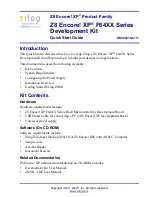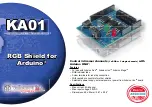GD32F10x User Manual
665
RMII: Reduced media independent interface
The reduced media-independent interface (RMII) specification reduces the pin count during
Ethernet communication. According to the IEEE 802.3 standard, an MII contains 16 pins for
data and control. The RMII specification is dedicated to reduce the pin count to 7.
The RMII block has the following characteristics:
The clock signal needs to be increased to 50MHz and only one clock signal.
MAC and external PHY use the same clock source.
Using the 2-bit wide data transceiver.
Figure 22-5. Reduced media-independent interface signals
PHY
MAC Controller
TX_EN
TXD[1:0]
CRS_DV
RXD[1:0]
REF_CLK
MII/RMII bit transmission order
No matter which interface (MII or RMII) is selected, the bit order of transmit/receive is LSB
first.
The deference between MII and RMII is bit number and sending times. MII is low 4bits first
and then high 4bits, but RMII is the lowest 2bits, low 2bits, high 2bits and the highest 2bits.
For example: a byte value is: 10011101b (left to right order: high to low)
Transmission order for MII use 2 cycles: 1101 -> 1001 (left to right order: high to low)
Transmission order for RMII use 4 cycles: 01 -> 11 -> 01 -> 10 (left to right order: high to low)
RMII clock sources
To ensure the synchronization of the clock source, the same clock source is selected for the
MAC and external PHY which is called REF_CLK. The REF_CLK input clock can be
connected to the external 50MHz crystal or microcontroller CK_OUT0 pin. If the clock source
is from CK_OUT0 pin, then the MCU needs to configure the appropriate PLL to ensure the
output frequency of CK_OUT0 pin is 50MHz.
Summary of Contents for GD32F10 Series
Page 63: ...GD32F10x User Manual 63 programmed during the chip production ...
Page 117: ...GD32F10x User Manual 117 010 1 0 011 0 9 ...
Page 416: ...GD32F10x User Manual 416 shadow register updates every update event ...
Page 427: ...GD32F10x User Manual 427 value ...
Page 518: ...GD32F10x User Manual 518 These bits are not used in SPI mode ...

















